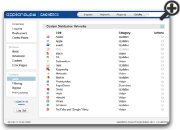 Most School Network Managers would agree that caching can help them manage the growing demand from teachers to use bandwidth-intensive video content in the classroom. Because video traffic does not behave like simple HTTP web pages, some caching solutions struggle to deal with the complexity.
Most School Network Managers would agree that caching can help them manage the growing demand from teachers to use bandwidth-intensive video content in the classroom. Because video traffic does not behave like simple HTTP web pages, some caching solutions struggle to deal with the complexity.
CACHEBOX has the intelligence to deal with this modern traffic:
Issues with video caching |
CACHEBOX is the solution |
|
Content Delivery Networks (CDNs) – many video sharing websites store the same content at multiple URLs. Many caching solutions treat each URL as unique content, so do not serve content from cache. |
CACHEBOX’s video extensions solve this problem; it locates and serves video site content by identifying the underlying video object – regardless of which server it is requested from. |
|
Rule changes – even if a caching solution can handle CDNs, websites like YouTube often change the rules for presenting their content which can break caching mechanisms. |
To keep up with rule changes, ApplianSys engineers continually update CACHEBOX’s CDN caching mechanisms. These updates are applied automatically to our customers’ CACHEBOXes via ‘sub-system updates.’ |
|
User behaviour – changing a video’s resolution, skipping forward and using other video controls can confuse a cache into storing multiple segments of a video that are not likely to be requested again. Users don’t necessarily watch complete videos, often just the beginning or end, or anywhere in between. But this can mean downloading the entire video for just those 30 seconds of playtime. |
CACHEBOX storage doesn’t get filled up with video fragments that have little chance of ever being served again. CACHEBOX supports Range Request caching, so only the part of a video a user wants will be cached and served, minimising bandwidth use and storage. |
